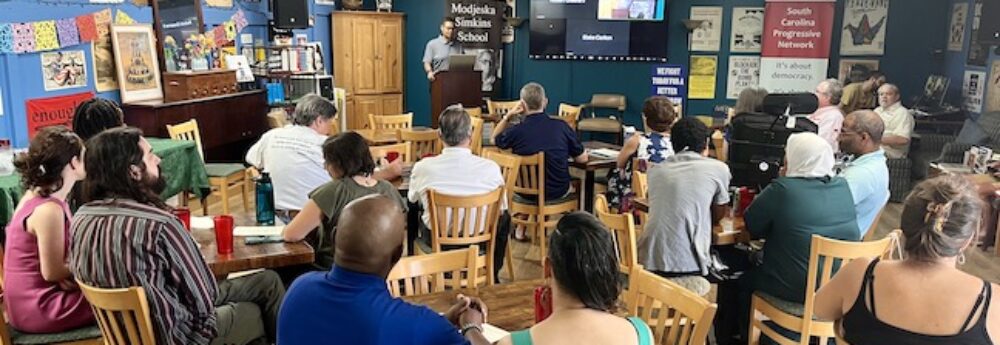Below the Belt: A Column by NOW President Kim Gandy
We live in a society obsessed with sex. Our relationship with sex, however, is conflicted and more than a little dysfunctional. Mixed messages abound. Popular culture and various institutions both glorify and demonize sex. And much of this is played out via the female body.
As young women attempt to navigate the sexual minefield laid out by the patriarchy, they need information that won’t steer them wrong. The stakes are high — unplanned pregnancy, sexually transmitted infections, a life forever altered, a future interrupted. So how do they get good information?
Enter the Internet — perhaps the most awesome research tool ever. With all that information at our fingertips and theirs, some of it’s bound to be wrong, right? Right. In fact, new research from the Stanford University School of Medicine and Lucile Packard Children’s Hospital demonstrates that health websites often provide teens with factually-challenged and incomplete information about sex and sexuality.
Heading up the study was Dr. Sophia Yen, a specialist in adolescent medicine at Packard Children’s Hospital, a clinical instructor of pediatrics at Stanford, and a longtime NOW supporter and advocate (not entirely relevant, but I have to brag).
Yen warns: “Teens should be cautious about finding sexual health answers on the Web. . . . Even widely trusted sites like WebMD are not that accurate when it comes to adolescent reproductive health.”
In a review of 35 popular health websites, Yen and her team identified the top six sexual health myths lurking online. These myths are the result of websites leaving out key pieces of information altogether, or simply failing to update their sites to reflect changes in knowledge or clinical recommendations.
Two of the myths involve emergency contraception (EC). A number of websites had not been updated to indicate that, as of August 2006, women 18 and older could purchase EC without a prescription in the U.S., and additionally that minors can buy EC directly from authorized pharmacists in nine states (Alaska, California, Hawaii, Maine, Massachusetts, New Hampshire, New Mexico, Vermont and Washington state). Within weeks of the release of Yen’s study, the FDA lowered the EC non-prescription age to 17, further underscoring the need for health websites to stay on top of such developments.
In addition, 29 percent of the sites neglected to note that EC does not cause an abortion if the woman is already pregnant when she takes it, and is not the same thing as RU-486, the early abortion pill. This is a common misconception that reproductive health sites would be wise to correct.
Sixty percent of the sites incorrectly stated that birth control pills can cause weight gain, even though recent research has shown that this is not true with modern oral contraceptives. And how many people know that IUDs are a safe form of birth control for adolescents? Not nearly enough, I’m sure, since only a fraction of websites providing information about IUDs even mention their use by adolescents, and several wrongly state that only women who have given birth should use IUDs.
While online information about sexually transmitted infections (STIs) was relatively accurate, less than half delivered the news that some STIs, such as Herpes, can be contracted through skin-to-skin contact or kissing. Finally, the study found that many sites had not updated guidelines for age and circumstances of first recommended pap test.
The prevalence of inaccurate information on trusted health websites is particularly alarming given other recent reports. Last year I wrote about a Centers for Disease Control (CDC) study estimating that one out of every four teenage girls — 3.2 million young women — “has at least one of the most common sexually transmitted infections.”
As if that weren’t bad enough, after a decade of declining teen pregnancy, birth and abortion rates, the birth rate for teens has risen for the past two years.
Surely misinformation is to blame, at least in part, for this troubling reversal. After all, we’ve just come out of eight years of aggressive funding for abstinence-only education programs (thanks, George W. Bush), which proved to be ineffective and riddled with falsehoods. President Obama has removed much of this funding from his 2010 budget, but abstinence-only proponents are working hard to maintain their funding in Congress.
And don’t get me started on crisis pregnancy centers (CPCs), which present a “compassionate” front to women who think they may be pregnant, but really exist to prevent women from obtaining or even considering abortion. Deception, misinformation, propaganda and shame are the tools of their trade. According to Legal Momentum, “CPCs are increasingly receiving federal and state funding for these activities — with dangerous consequences for women’s health and wellbeing. . . . the largest source of government funding for CPCs is federal abstinence-only program grants. This funding has brought inexperienced CPC employees and volunteers into schools to teach abstinence-only programs, replacing trained sexual health educators who had provided comprehensive sexual education.” Not to mention all of those “Choose Life” license plates that funnel money to these same groups.
Let’s face it, teens are curious about sex — sexual imagery is everywhere, and their hormones are surging. They want to know about sex, and many of them will engage in sex, whether or not their parents or some representative on Capitol Hill thinks they’re ready for it. To those who prefer that teens be unprepared to protect their reproductive health, who think that girls who dare to have sex should be punished with STIs or unplanned pregnancies, your reign will soon be over.
Let’s give girls and women full authority over their reproductive lives and the information to make sound choices about their sexual health. The iconic 1989 art piece by Barbara Kruger declared: “Your body is a battleground.” How satisfying it would be to see that come to an end at last.
